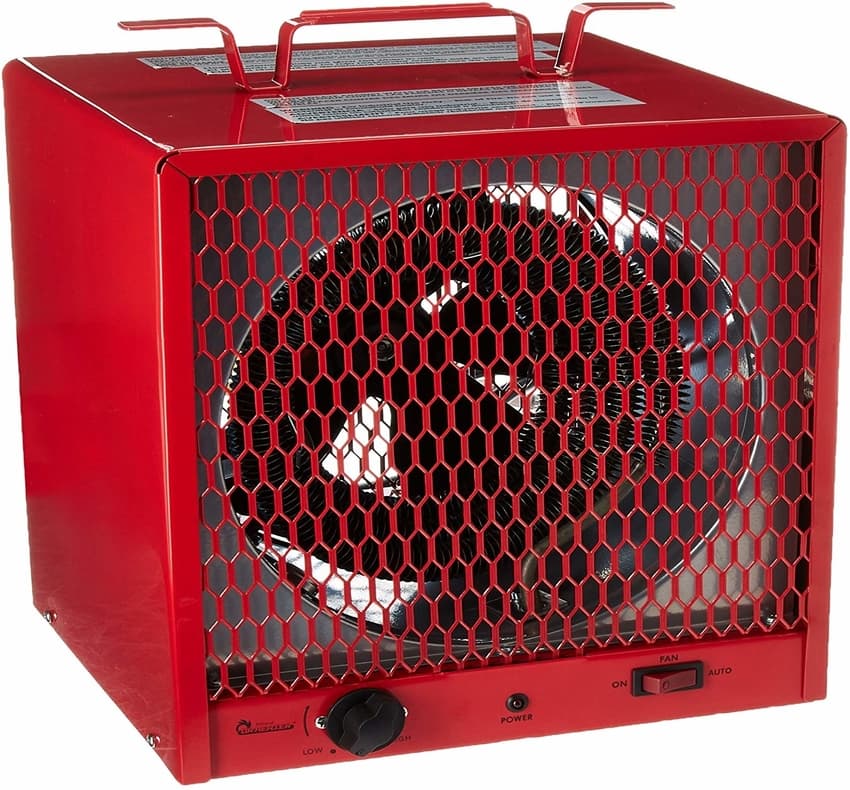Seven Easy-to-Follow Construction Heater Safety Tips
Construction heaters are specially designed to provide supplemental heat at job sites. They can help keep workers comfortable and productive, and they could also help protect pipes from freezing and hasten paint drying.
But just like any device, construction heaters come with risks that, if not properly managed, can cause grave danger to people, material assets, and the device itself. For your safety, here are some safety tips you can easily keep before and while you use a construction heater:
Buy only a UL/ULC-listed or CSA-approved construction heater.
There are thousands of construction heaters out there, but not all of them are of excellent quality in terms of function and user safety.
How can you make sure that your choice of construction heater is a good one? A reliable sign you can search for is a marking on the device or its packaging that tells it is UL/ULC-listed or CSA-approved. These marks indicate that a heater has been tested and is safe to use according to established standards and the manufacturer’s specifications.
These markings are not given away carelessly, so any device that has either one of them is a device that you can trust.
Follow the manufacturer’s indicated power supply.
Whether a heater runs on electricity, propane, or any other type of fuel, you should always be careful to follow the manufacturer’s recommended power supply. Even if you’ve used heaters in the past and you feel like you know better than what’s indicated on your device, you should remember that not following a manufacturer’s advice can result in damage that warranty would not cover.
Never tamper with a heater’s cord or plug.
Messing with an electric heater’s cord or plug can result in power-related problems and increased fire hazards. If you encounter any issues with your heater’s cord or plug, be sure to contact the manufacturer for their best advice.
Position a heater in a well-ventilated area.
Unless you’re using an infrared heater, a construction heater can cause carbon monoxide to build up and create serious health hazards. Carbon monoxide poisoning can cause dizziness, nausea, chest pains, and even sudden death.
To prevent these from happening, you should pay attention to proper ventilation and make sure that air flows are not obstructed.
Don’t move a heater while in use.
As common sense as this tip might seem, this one is easy to forget since we are used to moving portable devices, like fans or blowers, anytime we want. However, moving a heater while it is actively operating can be very dangerous as it can interrupt the power supply.
The same goes for refueling gas heaters–you should wait for a heater to cool down before you move the device and refuel.
Keep combustible materials at the recommended distance.
Despite modern safety features, construction heaters–and other types of heaters–come with risks of burning objects placed too close to them for too long. To avoid fire, it is best to keep combustible objects far from your construction heater.
Some heaters also come with a specific manufacturer’s recommended clearance for better user safety.
Keep a fire extinguisher close by.
Preventive measures such as the safety tips mentioned above are great ways to avoid untoward incidents. But as great as they are, a complete occupational safety procedure should involve responsive measures–one of it being the use of a fire extinguisher if a fire does happen.
Job sites hold a variety of important assets: human, material, and other resources that keep a business running and thriving. Because of that, it is always best to prepare for emergencies and put responsive measures in place.
As busy as workplaces can get, safety should still remain as an important area of concern all the time. If your company uses a construction heater but doesn’t adhere to these tips mentioned here, it might be time to step up and advocate for your safety as well as that of your workmates and your company’s assets.
Top 6 best construction heater electric
Top 6 best construction heater propane
Bio:
Rose dela Cruz has been providing informational content to construction professionals, homeowners, and business people through blogging. She contributes regularly to Engineer Warehouse.
Last update on 2024-04-03 from Amazon Product Advertising API





![SABRENT [3-Pack 22AWG Premium 3ft USB-C to USB A 3.0 Sync and Charge Cables [Black] (CB-C3X3)](https://m.media-amazon.com/images/I/418FZFNOyiL.jpg)










